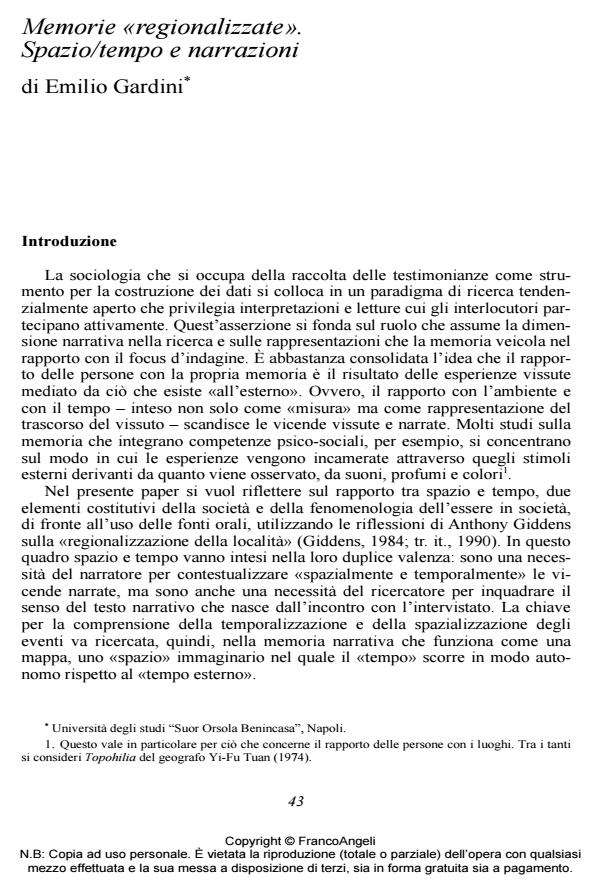Memorie "regionalizzate". Spazio/tempo e narrazioni
Titolo Rivista SOCIOLOGIA E RICERCA SOCIALE
Autori/Curatori Emilio Gardini
Anno di pubblicazione 2014 Fascicolo 2013/101
Lingua Italiano Numero pagine 18 P. 43-60 Dimensione file 648 KB
DOI 10.3280/SR2013-101002
Il DOI è il codice a barre della proprietà intellettuale: per saperne di più
clicca qui
Qui sotto puoi vedere in anteprima la prima pagina di questo articolo.
Se questo articolo ti interessa, lo puoi acquistare (e scaricare in formato pdf) seguendo le facili indicazioni per acquistare il download credit. Acquista Download Credits per scaricare questo Articolo in formato PDF

FrancoAngeli è membro della Publishers International Linking Association, Inc (PILA)associazione indipendente e non profit per facilitare (attraverso i servizi tecnologici implementati da CrossRef.org) l’accesso degli studiosi ai contenuti digitali nelle pubblicazioni professionali e scientifiche
What is the value of narrations to sociological research in their interaction with the categories of «time» and «space», and where does this relationship stand in the construction of the paradigm of knowledge? Time and Space are the frame of reference not only to social actions but also to the narrative encounters between interviewer and interviewed. The essay investigates this relationship through a first theoretical analysis with the notion of «regionalization» used by Anthony Giddens in the theory of structuration. Through the analysis of segments of interviews conducted throughout two studies, the results of the theoretical analysis will be compared to the empirical results. The aim of the essay is to contribute elements of reflection to the ongoing debate on the use of verbal sources in social sciences.
Emilio Gardini, Memorie "regionalizzate". Spazio/tempo e narrazioni in "SOCIOLOGIA E RICERCA SOCIALE " 101/2013, pp 43-60, DOI: 10.3280/SR2013-101002